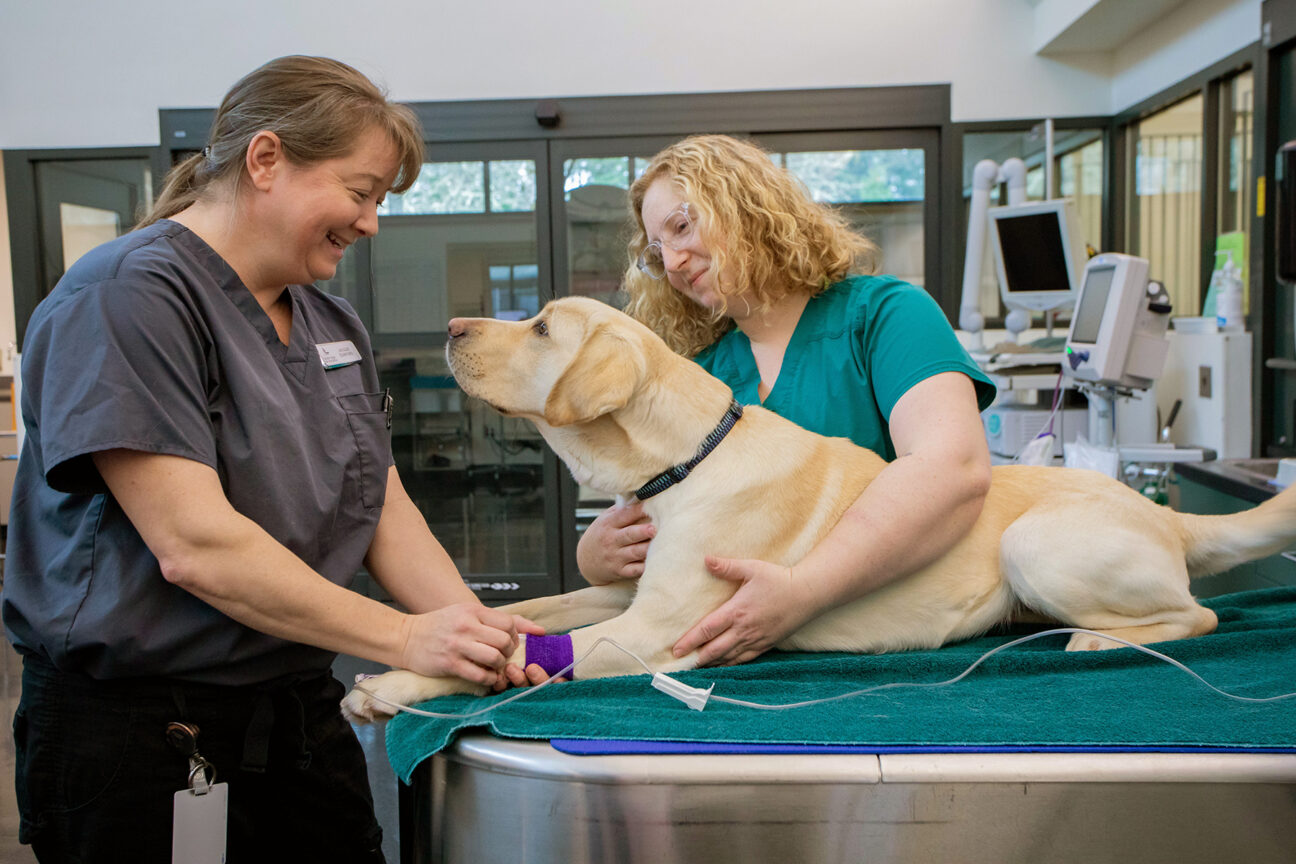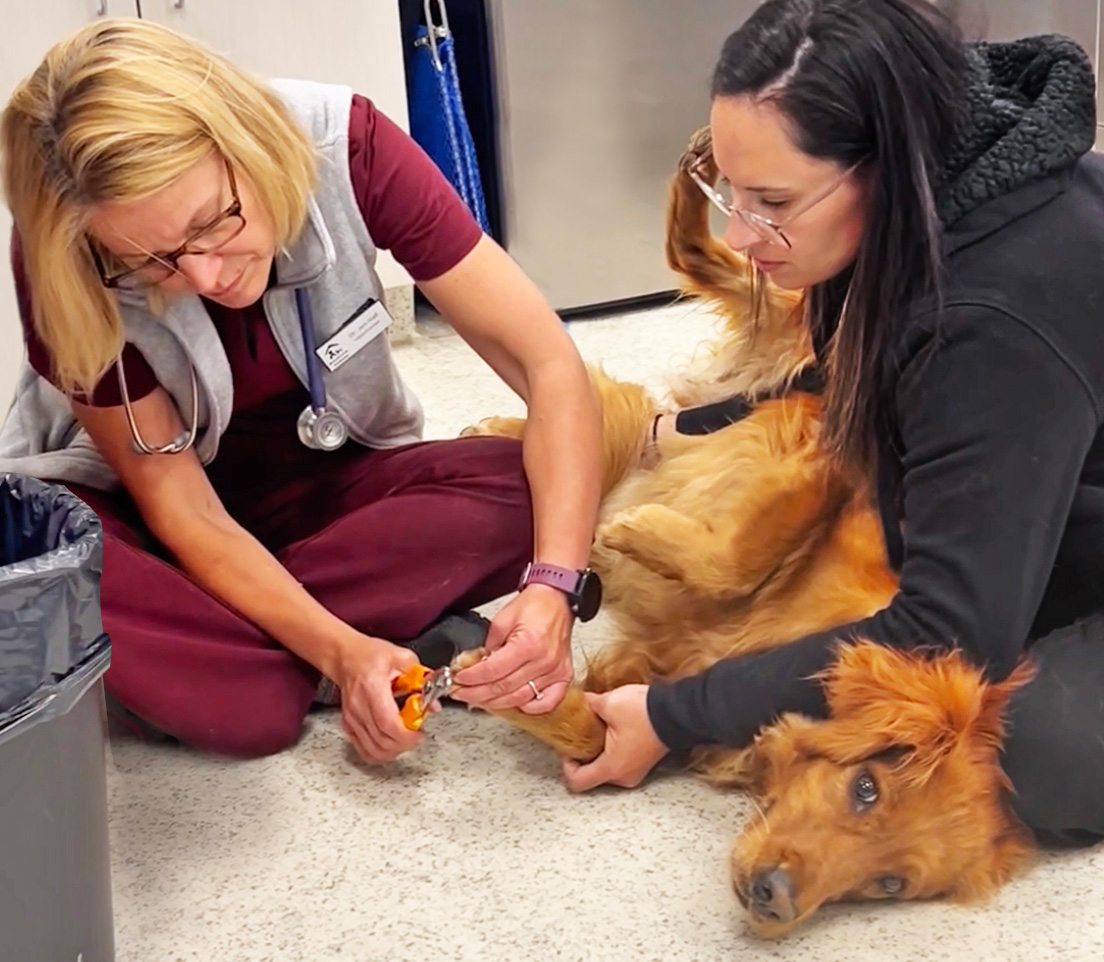What Sets an emergency vet bellingham Apart From a Regular Animal Hospital?
Wiki Article
Why Animal Rehabilitation Is Important: the Conveniences of Vet Services for Your Pet dog's Healing
Pet recovery is a crucial component of recovery for animals dealing with injuries or specials needs. Vet solutions offer essential support via customized rehab strategies that resolve specific demands. These plans often consist of discomfort administration, physical therapy, and nutritional support. Recognizing the various elements of pet rehabilitation can illuminate its value in boosting recuperation end results. What certain benefits do these solutions provide, and just how can they change a pet's recovery journey?Understanding Animal Recovery
Animal rehab incorporates a variety of restorative techniques focused on recovering the health and performance of hurt or disabled pets. This area integrates various strategies, consisting of physical therapy, hydrotherapy, and job-related treatment, customized to meet the specific demands of each animal. Rehabilitation specialists analyze a pet's condition, creating personalized treatment strategies that may entail exercises to reinforce muscles, enhance mobility, and improve general health. The procedure not only focuses on physical recuperation yet also addresses emotional and behavioral facets. Pets usually experience tension and stress and anxiety adhering to an injury, making mental wellness considerations vital in rehabilitation. By creating a supportive environment, therapists can help animals regain their self-confidence and adapt to their brand-new situations. With regular sessions, pets can experience substantial improvements, eventually resulting in a far better lifestyle. On the whole, comprehending pet rehabilitation highlights its relevance in promoting recovery and boosting the bond in between family pets and their owners.
The Function of Pain Management in Recuperation
Just how important is reliable discomfort administration in the healing of damaged animals? It plays an essential function in assisting in healing and boosting the total wellness of pets. Correct pain management not just minimizes pain but additionally promotes mobility, allowing animals to take part in recovery tasks necessary for recuperation. When pain is successfully taken care of, pets often tend to respond favorably to therapy, bring about quicker recovery outcomes.Veterinarians make use of numerous methods to evaluate and deal with pain, including medications, acupuncture, and alternative therapies. By customizing pain monitoring methods to the individual demands of each pet, veterinarians can assure that family pets remain tranquil and cooperative throughout their recuperation journey. In addition, minimizing discomfort aids lower stress and anxiety, which can hinder healing and prolong recuperation times. To sum up, efficient pain administration is important for boosting the healing procedure and boosting the quality of life for hurt animals.Physical Therapy Techniques for Family Pets
Numerous physical therapy techniques are available to help in the recovery of family pets recouping from injuries or surgical treatments (24 hour vet bellingham). These methods can improve flexibility, soothe discomfort, and advertise healing. Healing exercises, as an example, assistance strengthen muscle mass and boost joint function, permitting family pets to regain their physical capacities gradually. Hand-operated treatment, that includes massage therapy and mobilization, can minimize stress and improve flow, adding to a quicker recovery.Other techniques such as passive series of motion exercises motivate joint versatility and minimize tightness. Furthermore, electrical stimulation therapy might be used to promote nerves and muscle mass, promoting healing and discomfort relief.Veterinary professionals frequently tailor these strategies per family pet's certain demands, ensuring a detailed recovery strategy. By applying these physical treatment methods, animals can experience improved lifestyle and a much more effective recuperation from their disorders. The assimilation of these practices into rehab programs is crucial for perfect healing outcomesBenefits of Hydrotherapy for Rehabilitation
Hydrotherapy supplies considerable benefits in animal rehab, particularly in boosting flexibility. This water-based therapy promotes discomfort alleviation while giving comfort to injured or recouping animals. Additionally, it assists in strength-building exercises that add to overall physical recuperation.Enhanced Flexibility Improvement
As pets recover from injuries or surgeries, enhanced flexibility commonly becomes a main goal of their rehabilitation. Hydrotherapy acts as a valuable device in attaining this objective. Through water-based workouts, animals can participate in low-impact activities that facilitate joint mobility and strengthen muscular tissues without the stress and anxiety of weight-bearing activities. The buoyancy of water sustains their bodies, permitting raised variety of movement and mobility enhancement. Furthermore, hydrotherapy motivates far better balance and sychronisation, which are essential for restoring normal motion patterns. Normal sessions can lead to significant development in an animal's physical capacities, eventually improving their lifestyle. This technique not just aids in recovery however additionally promotes a much more energetic and fulfilling way of living post-rehabilitation.Pain Relief and Comfort

Alleviation from discomfort is a crucial element of pet rehabilitation, and hydrotherapy substantially adds to this procedure. By utilizing water's buoyancy, hydrotherapy lowers joint stress and anxiety and minimizes discomfort during activity. This therapeutic strategy gives a calming environment where animals can involve in gentle workouts without the complete weight of their bodies influencing their recuperation. The cozy water stimulates blood flow, advertising recovery while also encouraging leisure. In addition, hydrotherapy sessions can be customized to meet the certain demands of the pet, making certain perfect comfort. As pets experience decreased discomfort and raised comfort degrees, their overall willingness to take part in rehabilitation tasks often boosts, leading to a more efficient recuperation journey. Hydrotherapy serves as a vital tool in boosting pain relief and convenience throughout rehab.
Stamina Building Exercises
Strength-building workouts play a necessary function in the rehab procedure, with hydrotherapy offering unique benefits. This type of treatment uses water resistance to improve muscle stamina without placing too much pressure on the joints. The buoyancy of water sustains the pet's weight, permitting safer activity and increased range of motion. Furthermore, hydrotherapy can enhance cardio health and promote total fitness, aiding in faster healing from injuries or surgical treatments. The regulated setting also decreases the danger of reinjury, making it a suitable option for animals calling for recovery. Regular hydrotherapy sessions can cause obvious improvements in wheelchair, toughness, and endurance, inevitably enhancing the pet dog's high quality of life and capacity to go back to normal tasks.Relevance of Customized Rehabilitation Plans
Personalized rehab strategies are necessary for addressing the distinct requirements of each pet, making sure individualized treatment approaches. These strategies permit effective progression monitoring and needed changes, fostering suitable recovery outcomes. Additionally, a holistic method can enhance the general health of the pet, advertising an extra thorough rehabilitation experience.Individualized Therapy Approaches
While lots of recovery programs embrace a one-size-fits-all method, the special needs of each pet necessitate individualized therapy prepare for perfect recovery. Customized rehab plans take into consideration numerous variables, consisting of the pet's species, age, case history, and details injuries or conditions. By tailoring interventions, vets can attend to each pet's special obstacles, taking full advantage of the effectiveness of the rehab procedure. Embellished plans might include different techniques such as physical treatment, hydrotherapy, and healing exercises, guaranteeing that the treatment straightens with the pet's capabilities and progress. In addition, customized approaches foster a more powerful bond in between the animal and the caregiver, promoting a much more interesting and encouraging healing environment. Inevitably, individualized therapy is crucial for accomplishing ideal feasible end results in animal recovery.Development Tracking and Adjustments
:max_bytes(150000):strip_icc()/emergency-vet-service-820365070-2000-e737f0bfc786484da5141789e2472450.jpg)
Holistic Healing Approaches
Alternative recuperation strategies are crucial for efficient animal rehabilitation, as they emphasize the significance of individualized therapy strategies tailored per pet's specific demands. This strategy thinks about the physical, psychological, and environmental aspects influencing recuperation. Custom-made rehabilitation strategies might include a mix of why not check here physical treatment, nutritional therapy, and behavioral alterations. By dealing with these diverse facets, veterinarians can improve the general health of the pet and promote a faster recovery. Additionally, such tailored techniques promote a deeper understanding of the animal's special obstacles, leading to a lot more effective interventions. Eventually, holistic recuperation techniques not just improve physical health yet additionally add to the pet's psychological and psychological security, making certain a detailed rehab experience.The Influence of Nourishment on Recuperation
Nourishment plays an essential role in the healing process for rehabilitating animals, usually establishing the speed and efficiency of healing. A healthy diet regimen gives the required nutrients that sustain tissue fixing, enhance the immune system, and boost general vigor. Protein is specifically crucial, as it aids in muscular tissue restoring and healing from injuries. Necessary fats, vitamins, and minerals likewise add to decreasing inflammation and advertising ideal cellular function.Veterinarians frequently stress the relevance of customized nutrition strategies, considering each click to read more pet's particular needs, age, and wellness condition. Proper hydration is just as important, as liquids help with nutrient absorption and help in detoxification. By making certain that pet dogs receive proper nourishment, caretakers can greatly enhance their chances of a successful recovery, leading to much better long-term health and wellness results. Ultimately, nutrition offers as a fundamental component in the recovery trip, sustaining pets in gaining back strength and resilience post-injury or disease.Success Stories: Animals Who Flourished After Rehab
Effective rehab stories abound, showcasing the strength of family pets that have gotten rid of considerable obstacles. Take, as an example, Bella, a golden retriever that endured extreme injuries from a vehicle crash. With committed vet care and a thorough rehab program, she reclaimed her movement and returned to her playful self, much to her owner's pleasure. Max, an elderly cat identified with arthritis, experienced remarkable improvement via a combination of physical treatment and discomfort administration. His newly found dexterity permitted him to appreciate his favorite sunbathing spots again. One more inspiring situation is that of Coco, a saved greyhound that got over anxiety with habits adjustment and socialization methods, enabling her to flourish in her new home. These success stories exemplify the transformative power of pet rehabilitation, stressing that with the ideal support, pet dogs can not only recover however lead fulfilling lives, enhancing the bonds they share with their family members.Regularly Asked Inquiries
How much time Does the Rehabilitation Refine Generally Consider Family Pets?
The rehab process for animals generally varies based upon the injury or problem, ranging from a few weeks to numerous months. Private development, treatment type, and dedication to workouts greatly affect the total period of healing.Exist Any Type Of Threats Connected With Pet Recovery?
Animal rehab might carry risks such as worsening of injuries, improper methods bring about discomfort, or inadequate tracking throughout recovery. These aspects can prevent progression and affect the general efficiency of the recovery process.
Can All Pets Gain From Recovery Services?
Not all pet dogs may call for rehab, but lots of can benefit substantially. Rehab services can enhance mobility, ease pain, and boost overall well-being, specifically for those recuperating from injuries, surgical procedures, or chronic problems.Exactly How Can I Prepare My Pet Dog for Recovery Sessions?

What Signs Suggest My Pet Needs Rehabilitation?
Signs indicating an animal may need rehab include difficulty walking, limping, decreased task levels, unwillingness to jump, or signs of discomfort. Observing these habits can trigger owners to seek specialist analysis and therapy for their pet dogs.Report this wiki page